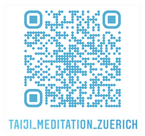
Die Taiji Klassiker erwähnen die elastische Kraft des Taiji und vergleichen den Aufbau dieser Kraft mit dem Spannen eines Bogens.
Elastische Kraft entsteht durch eine Kombination verschiedener Elemente, z.B. der richtigen Entspannung und Ausrichtung des Körpers sowie dem aktiven Dehnen von Muskeln.
Im Unterschied dazu arbeitet man im Yoga, Qigong oder beim Sport meist mit passivem Stretch.
Beim aktiven Dehnen stretchen wir eine aktiv regulierten Muskel durch Gewicht, Schwung oder dem Druck eines Partners, während der Gegenspieler-Muskel entspannt bleibt (exzentrische
Kontraktion).
Richtig gedehnte Muskeln können viel Kraft speichern: Ein gedehnter Muskel hat bis zu 10x mehr Kraft hat als ein kontrahierter. Mit langem Training und tiefer, starker Intention (Yi) kann man die
gespeicherte Kraft als Welle durch den Körper schicken (unstretch - issue).
.
.
Elastic force
The Taiji classics mention the elastic force of Taiji and compare the build-up of this force to the stretching of a bow.
Elastic force is created through a combination of different elements, e.g. the correct releasing and alignment of the body and the active stretching of muscles.
In contrast, yoga, qigong or sports usually work with passive stretch.
Working with active stretching, we stretch an actively regulated muscle through weight, momentum or the pressure of a partner, while the counterpart muscle remains relaxed (eccentric
contraction).
Properly stretched muscles can store a lot of strength: a stretched muscle has up to 10x more strength than a contracted one. With long training and deep, strong intention (Yi), this stored force
can be sent through the body as a wave (unstretch - issue).
Quellen z.B.
https://patrickkellytaiji.com/TAIJI/MOVINGART/activestretching.html
Patrick Kelly: Infinite Dao, S. 46-47
Foto: «Heureka» von Tinguely am Zürichhorn

